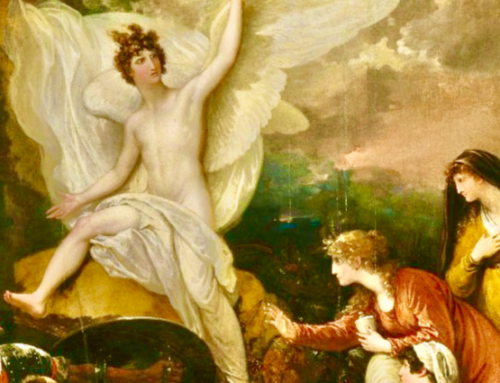 The idea was intriguing: Present a concert of the music of Antonio Vivaldi and Niccolo Paganini in the guise of a tale of two rival violinists, who vie for technical supremacy and for the attention of a comely young woman. Throw in the germ of an idea from Edgar Allan Poe’s The Masque of the Red Death, have the orchestra members wear eighteenth-century masks and capes, include the Devil and a couple of ballet dancers, set the entire thing in exotic Venice, and one would think that such interesting visuals would surely hold the attention of the modern audience, which craves such stimuli during aural performances.
The idea was intriguing: Present a concert of the music of Antonio Vivaldi and Niccolo Paganini in the guise of a tale of two rival violinists, who vie for technical supremacy and for the attention of a comely young woman. Throw in the germ of an idea from Edgar Allan Poe’s The Masque of the Red Death, have the orchestra members wear eighteenth-century masks and capes, include the Devil and a couple of ballet dancers, set the entire thing in exotic Venice, and one would think that such interesting visuals would surely hold the attention of the modern audience, which craves such stimuli during aural performances.
Unfortunately, the Mercury orchestra’s The Crimson Prince of Venice: An Instrumental Ballet for String Orchestra was a disappointment. Based in Houston, Texas, the Mercury bills itself as “the orchestra redefined,” though, mercifully, the ensemble does not actually live up to this post-modernist signature line. Beyond the use of period instruments, little sets the Mercury apart from the typical classical ensemble; under the direction of Denis Plante, the Mercury generally plays the standard repertoire, focusing on works from the Baroque and Classical Periods, presenting them faithfully as the composers meant them to be heard. The Crimson Prince represents one of the group’s more innovative performances, but even here few liberties were taken with the works of Vivaldi and Paganini. The problem was that too little of the music was written by these masters, the majority of it being the work of Mr. Plante.
The wordless story, according to the program, is simple enough: It is Carnival time in Venice. Two groups of musicians play on the docks: the carnavalieri and the gondolieri. No one can top the technical skill of the carnavalieri‘s leader, the Crimson Prince. At a masquerade ball at the Doge’s palace, the Prince tries to seduce Rosalinda, the Doge’s daughter; she, however, is smitten by a mysterious newcomer named Niccolo. At last the two rival violinists square off in a graveyard.
The problem is that much of the action on stage is at once confusing and uninteresting, and tension is low until we at last arrive at the climactic graveyard scene. But by this time, the audience has generally lost interest in the tale. If re-worked to include more of the glorious music of the Red Priest of Venice (Vivaldi) especially, and more understandable action on stage, the Mercury’s “ballet” might have some staying power.
Books on the topic of this essay may be found in The Imaginative Conservative Bookstore.







Leave A Comment